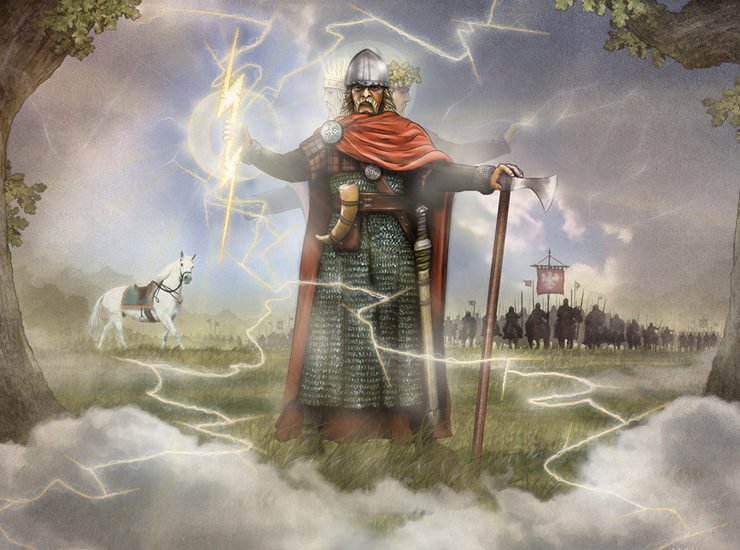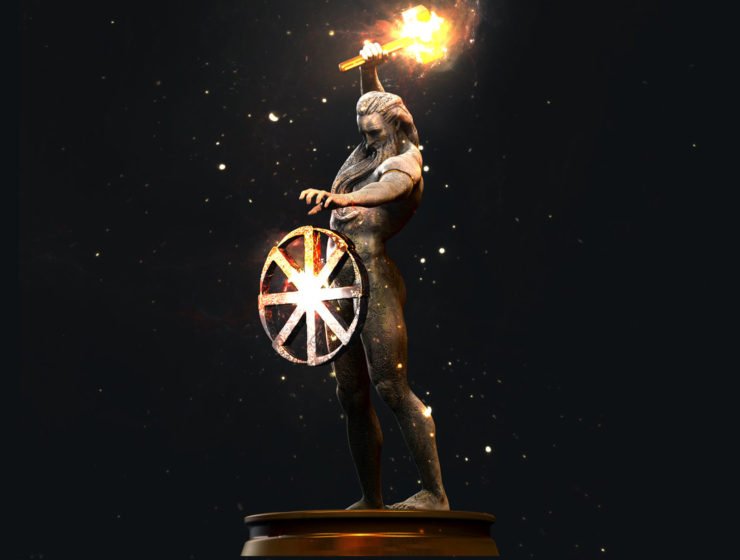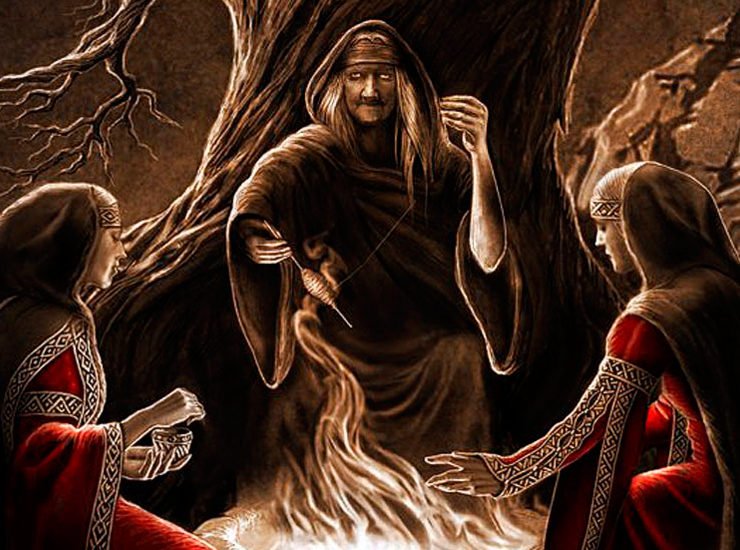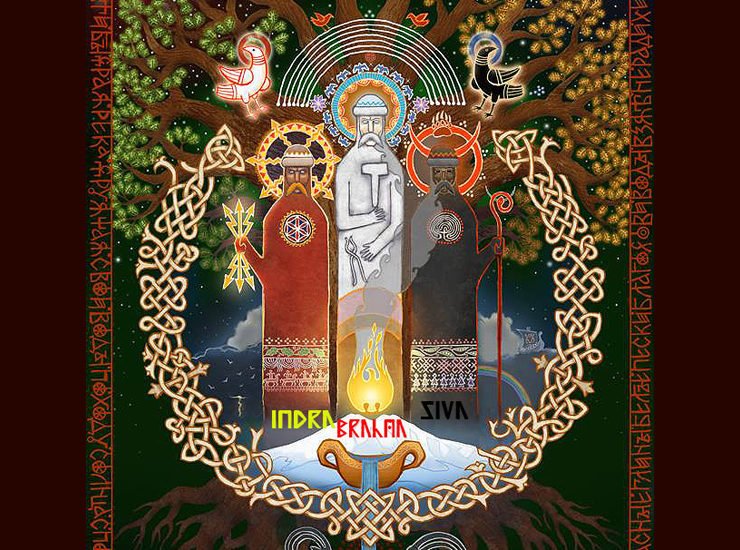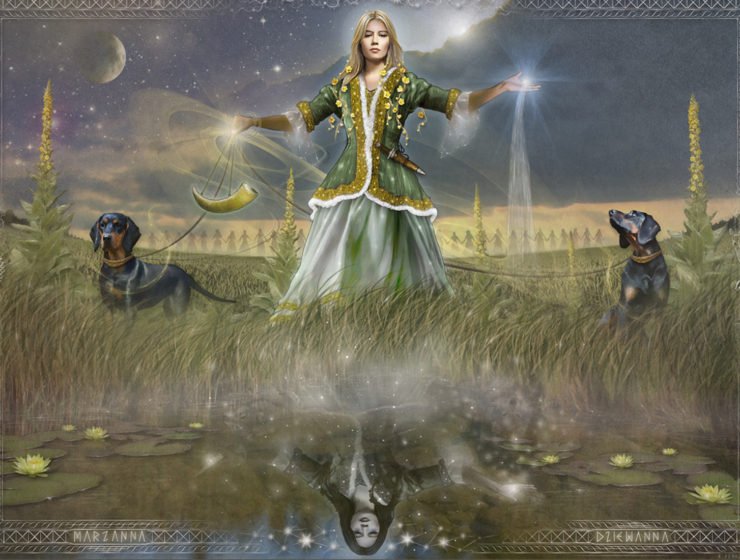The worship of Svetovid or Svantevid has been established among Baltic Slavs, Rugians and Pomeranians, and Carantanians in the Alpine region. We encounter him only in Middle Europe.
Kresnik
The name Kresnik is reflected in the word “kres” (bonfire), that derives from the word “iskra” (spark). The original meaning of all these names is ultimately fire, symbolic representation of the Sun.
Baba
This is the goddess of death and rebirth, that in the mythology of individual nations appears under different names. Her messenger since pre-historic time has been the owl, who is even today still regarded as herald of death.
Triglav
In Slavic languages Triglav means the three-headed one. The image of the three-headed god is recorded in the sources on Pomerania, in traditions of Branibor and indirectly of Carantania, where it
Živa
Živa was above all the goddess of water. In the consciousness of people she represented the concept of life, personified by water. She was their first “goddess”, even before mother Earth, who rules
Maya
Maya, goddess of nature, greenery and flowers gave the name to the month May. Its visible symbol is maypole (orig. Sl. mlaj), also also called may or maya, which is the focal point of 1st May festivities


